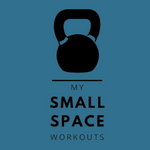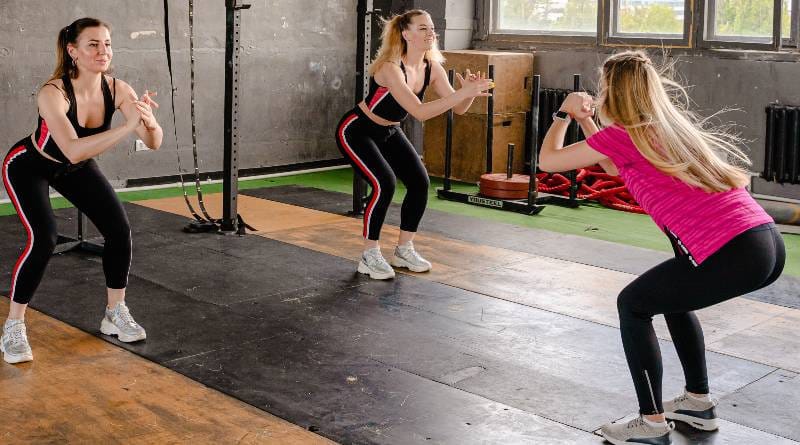Squats are one of the most popular exercises for those looking to build muscle and strength in the legs, buttocks, and lower back. The reason for this is simple: squats work! Not only are they great for working out the lower body, but because of the nature of the exercise and the versatility of how a squat is performed, the exercise is one of the best ways to engage numerous muscle groups at the same time. SO why would anybody stop squatting?!
But what happens when someone who usually does squats suddenly stops doing them? People choose to forgo squats for many reasons. Perhaps a recent injury forces you to go easy for a few weeks, or you decide the upper body needs some attention. This article will help you figure out what happens when you start skipping squats, and how you can get back into this beneficial exercise.
Why Squatting Works
Doing squats as part of a regular diet and exercise can have dramatically positive effects on overall health. The benefits of squats are numerous, and include:
- Short time commitment
- Low impact
- Very versatile and adaptable.
- Mimics a natural body movement
- Activates numerous muscle groups simultaneously
- Works the abdominals and core muscles
- Helps to burn glycogen in the muscles
- Builds a fabulous, round behind!
Engages Multiple Muscle Groups
Many people do targeted workouts that focus on a single muscle group. While that’s fine in some situations, research has proven that activating multiple muscle groups at the same time leads to more weight loss and, obviously, greater muscle build.
Squatting is a great way to work many muscles simultaneously. Squatting activates all of the following muscles:
- Quadriceps
- Hamstrings
- Hip Flexors
- Glutes
- Abductors
- Abdominals
- Lower back
Fast and Easy
In today’s fast-paced world, people are looking for the biggest bang for their buck when they work out. A good squatting workout can be accomplished in as little as ten minutes (genuinely). When you consider the amount of muscle building and calorie burning that can be attained in such a short amount of time, adding squats into a workout regime just makes sense.
When we say “easy” we appreciate that heavy squats are never easy, but in terms of structuring your squatting workout and they are easy: squat, repeat, you’re done!
Versatile
Squats are a great exercise because simply changing the position or adding weight to the equation can completely change the way the muscles are affected. People who are looking for a very low-impact workout can try standing squats. Split squats add another layer of complexity. Adding weight to the upper body using a barbell, dumbbells or kettlebells adds to the difficulty and helps to build muscle faster.
And for those with mobility or flexibility issues, squats are a wonderful way to incorporate muscle building into a limited workout routine. Consider adding a chair for added balance and support.
I know firsthand, through the experience of my wife who was disabled following a work related accident, that slow, bodyweight squats can be a physique-saver when all other exercise is out of your ability.
What Happens When You Stop Squatting?
When you regularly perform a specific exercise and then suddenly stop, your body starts to go through distinct changes. When you begin an exercise regime, it won’t be long before you will start to notice subtle changes in your muscle tone, strength, and endurance.
When that exercise is stopped for any reason, those changes will inevitably begin to reverse. You may not notice it right away, but it will soon become apparent.
This is one of the reasons that many people who frequent the gym do exercises in cycles: for example, arms one day, legs the next, chest on another, cardio on the weekends. Whatever the case may be, the idea is to give each area of the body specific and focused attention on a regular basis, before muscle atrophy kicks in.
Leave it too long before hitting a muscle group again, and the gains made will begin to fade. The other benefit of a split approach such as this, is that you avoid focusing too much on one area without allowing ample time for muscles to rest, recover and grow.
You may be wondering what kind of specific changes your body will go through if you suddenly stop squatting during your exercise regime. We listed just a few of the most drastic changes you will see after discontinuing any exercise.
Heart Rate
People who exercise a lot have a heart that is stronger and better able to pump blood and therefore move oxygen, throughout the body. When you stop exercising for a few weeks, your heart gets weaker, and your body loses some ability to use oxygen as effectively. This is more noticeable when stopping aerobic exercise, versus anaerobic exercise such as squatting. But if you stop exercising altogether, the heart is definitely one of the muscles that will be affected.
Endurance
Endurance is one of those things that builds as you exercise, so it makes sense that quitting any exercise will reverse this effect. This means your muscles, and body will tire more easily. Even though squatting is primarily an anaerobic exercise, performing any action repeatedly helps to build endurance and make the body systems stronger.
Muscle Size
Weight-lifting and resistance exercises, like squats, help to build muscle. Squats are without doubt one of the most effective exercises for building muscle and entire pyshique transformation. When the exercise is stopped, that means muscle cells will start to get smaller, shrinking their overall size and strength. Gains previously made will slowly disappear.
The tragedy is that your beautifully sculpted butt will rapidly begin to lose it’s shape and firmness.
Weight Gain
When muscle cells get smaller, fat cells are more likely to get bigger. Smaller muscles mean that fewer calories are being burned, leading to weight gain. It’s likely that within two weeks of stopping exercise, the body will start to put on weight, or at the very least, your body composition will begin to change in favour of fat instead of muscle.
Risk of Health Problems
Higher body fat percentages lead to the risk of long-term health problems, including extra pressure and stress on joints and bones. More weight also puts an extra burden on vital body systems, like the lungs and heart. Diabetes, heart disease, high blood pressure, and an increased risk of stroke or heart attack all stem from higher percentages of body fat.
Try Our 30-Day Squat Challenge!
Maybe you’ve recently stopped squatting during your gym visits and are ready to dive back in or simply want to try out this amazing exercise option for the first time. Either way, don’t let a little setback stop you from reaping the benefits of squats!
We invite you to try our equipment-free 30-day squat challenge! A little motivation goes a long way, and we guarantee that if you stick with the program for just a month, you will never want to look back.
And remember this: the next 30 days will pass regardless of whether you choose to take up the 30 day challenge. But if you do take up the challenge, then 30 days from now you will be capable of 300 bodyweight squats in a single workout!
Conclusion
Squatting is a total-body exercise experience that allows everyone to get stronger, build muscle, gain strength, and feel more energized.
When you stop squatting you are heading towards a future of muscle atrophy, unfavourable weight gain and higher risks of disease. Not only that, your physique will become less attractive.
But fear not! You can get back into squatting with our 30 day challenge.
So if you’re new to squats, or just looking to get back into this valuable exercise, don’t wait another moment. Your body deserves attention, and you deserve to feel great!


